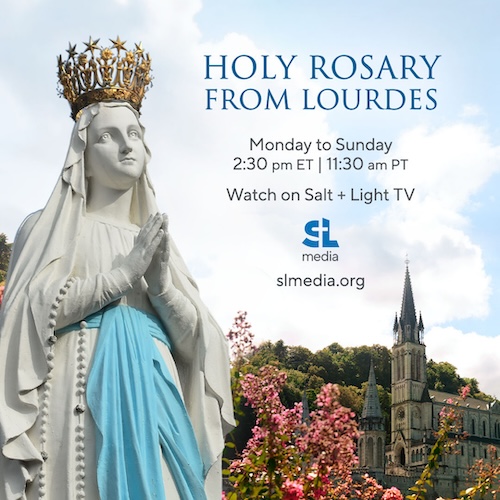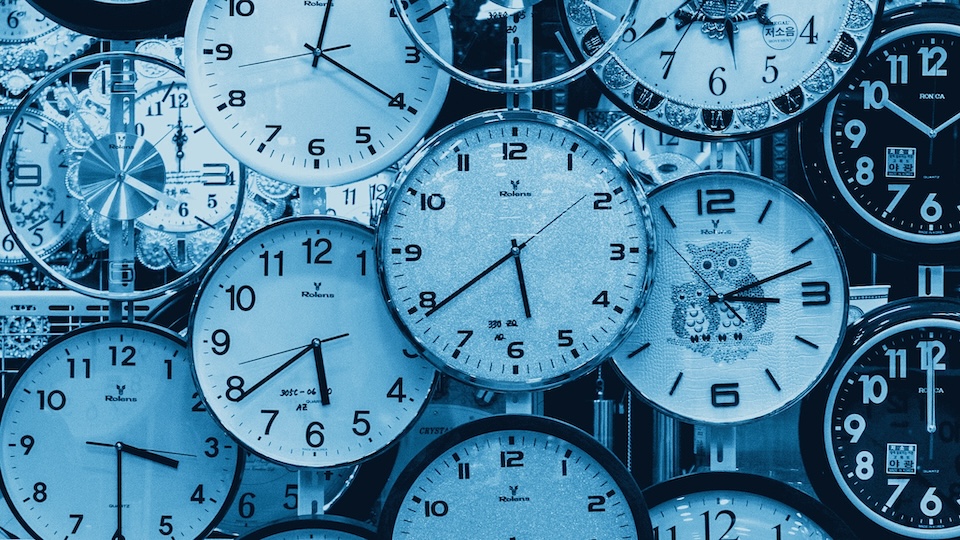

Enabling a Rapid Response: the DDF’s Norms for Supernatural Phenomena, Part One
Matthew Neugebauer
Tuesday, June 18, 2024
A few days before Pentecost Sunday, the Dicastery for the Doctrine of the Faith (DDF) released their new Norms for proceeding in the discernment of alleged supernatural phenomena. They’re generally meant to curb the excesses of popular devotion around alleged supernatural phenomena such as apparitions of Jesus, Mary, or the saints, as well as private revelations, weeping statues, large-scale healings, and other occurrences that could defy scientific explanation. More directly, they govern the response of both diocesan bishops and the DDF to these phenomena and their surrounding devotions, and clarify the relationship between the DDF and local bishops.
The Norms update the previous rules promulgated by Pope Paul VI from 1978. For a Church that "thinks in centuries," a few decades is not a very long time. However, today’s world is drastically different from that of 1978; Paul VI's rules seemed due for an update. DDF Prefect Cardinal Victor Manuel Fernandez, in his commentary preamble ("Presentation"), pinpoints the problem: “After the 1978 Norms were put into practice...it became evident that decisions took an excessively long time, sometimes spanning several decades." If “several decades” was considered an “excessively long time” in an age of radio, newspaper, and television, it’s surely an eternity in our age of a web-integrated, globalized society and its relentless, 24-hour on-demand news cycle,
The Norms’ introduction fleshes out this need to speed up the process of responding to alleged supernatural occurrences:
 At Salt + Light Media, we’re especially grateful for the team at the Lourdes Grotto, who bring us the broadcast of their English-language Rosary to air on Salt + Light TV every day at 2:30 pm ET/11:30 am PT. We also broadcast their French-language Rosary daily at 3:3o pm ET/12:30 pm PT. In this age of instant communication, you too can partake in this worldwide devotion to Mary and her appearance to St. Bernadette in 1858.
Stay tuned for Part Two of my reflection next week, which will consider one possible spiritual meaning of the new Norms.
At Salt + Light Media, we’re especially grateful for the team at the Lourdes Grotto, who bring us the broadcast of their English-language Rosary to air on Salt + Light TV every day at 2:30 pm ET/11:30 am PT. We also broadcast their French-language Rosary daily at 3:3o pm ET/12:30 pm PT. In this age of instant communication, you too can partake in this worldwide devotion to Mary and her appearance to St. Bernadette in 1858.
Stay tuned for Part Two of my reflection next week, which will consider one possible spiritual meaning of the new Norms.
With the advent of modern means of communication [the Vatican’s term for social media], these phenomena can attract the attention of many believers or cause confusion among them. Since news of these events can spread very quickly, the pastors of the Church are responsible for handling these phenomena with care by recognizing their fruits, purifying them of negative elements, or warning the faithful about potential dangers arising from them (cf. 1 John 4:1) (#6).
How do the new Norms enable a faster response?
The dicastery instructs diocesan bishops or their delegates to conduct a brief but thorough investigation of the phenomenon and the devotion surrounding it. The bishop then recommends one of six conclusions to the DDF, including a declaration that the phenomenon is not a supernatural occurrence, if the investigation finds a scientific explanation for it, or it turns out to be a fraud (#22). Another possible “full stop” option is if the investigation uncovers abuse or corruption alongside what might otherwise be a genuine spiritual experience. This option allows the authorities to quickly put the brakes on those taking nefarious advantage of a phenomenon and its accompanying devotion (#20). Some options entail a milder prescription. The bishop can issue a pastoral or teaching letter if “some aspects of confusion or potential risks are also perceived” amidst “important positive signs.” If a devotion “has already spread widely, and there are verifiable spiritual fruits connected to it” despite the presence of “various or significant” concerns, then the bishop can deftly “seek out alternative expressions of devotion and possibly reorient its spiritual and pastoral aspects,” rather than risk significant opposition (#18-19). At best, the bishop can conclude that an alleged phenomenon and its surrounding devotion pose no problems (for the time being) with regards to Catholic doctrine, faith, or spiritual life (#17). This is called a Nihil Obstat, Latin for “nothing hinders.” You’ll find the same phrase at the beginning of a book on theology or spirituality. It means that a bishop has declared that nothing in the book contradicts the faith and morals of the Church. Articles 14 and 15 offer a number of things the bishop ought to look for in order to make his conclusions. These include: whether the phenomenon and its accompanying messages adhere or contradict Church teaching; whether the people claiming to witness the phenomena have a reputation for honesty and integrity or might be out to deceive people for money or popularity (or worse); and most importantly, whether or not the alleged phenomena has inspired “the fruits of the Christian life” in the communities gathered around these phenomena, “including a spirit of prayer, conversions, vocations to the priesthood or religious life, [and] acts of charity” (Art. 14 s. 4).What about a positive affirmation?
I should note that one possible conclusion is missing, which was an option in the 1978 Norms. Under the "New Aspects" section of Cardinal Fernandez' "Presentation," the DDF Prefect asserts that, "As a rule, these potential conclusions do not include the possibility of declaring that the phenomenon under discernment is of a supernatural origin--that is, affirming with moral certainty that it originates from a decision willed by God in a direct way" (emphasis added). I should also note that the Norms don’t outright prevent a positive affirmation from ever happening: they just prevent an individual bishop or a national bishops’ conference from making them, here and now. They reserve that kind of initiative primarily to the long-term discernment of the Church. Again, positive pronouncements can take decades of reflection, theological examination, and very widespread – possibly global – devotion. That reservation is implied in the requirement for local bishops to submit their conclusions to the DDF for final approval. It’s made explicit in the provision for the Supreme Pontiff to “authorize a special procedure” (#23), which he can develop to suit each circumstance. That provision is meant to carve out an exception: it ensures the Pope’s ability to speak for the whole Church when he discerns the need, as part of his infallible Magisterium. (By way of analogy, the Pope can also bypass the usual beatification or canonization process in very rare cases. He did so a day after the Norms were released.) The idea is that this longer and wider reflection on a positive pronouncement can still go on as long as it needs to, while local authorities respond to the immediate need for guidance and clarity in the meantime. The simplicity of these six possible conclusions will surely make for a speedier decision: they require the investigation to confine itself to data that is quantifiable and therefore easily obtainable, such as who gets financial and material benefit from the devotion and how much they receive, the reputation of those involved, and the growth of vocations as mentioned above. Lastly, there are of course ways that people and local economies can materially benefit from a phenomenon and its devotion that are reasonable and “pose no problem.” By far the most legitimate of these involve apparitions that have enjoyed a long, global, and institutionalized devotion, such as the visions of the Virgin Mary in Lourdes, Fatima, Tepeyac (Guadelupe), and countless other places. I’m thinking of the clergy and staff at the shrines, cathedrals, and pilgrimage sites, who can be employed full-time to celebrate Mass for and offer hospitality to pilgrims, and lead retreats and daily Rosaries. At Salt + Light Media, we’re especially grateful for the team at the Lourdes Grotto, who bring us the broadcast of their English-language Rosary to air on Salt + Light TV every day at 2:30 pm ET/11:30 am PT. We also broadcast their French-language Rosary daily at 3:3o pm ET/12:30 pm PT. In this age of instant communication, you too can partake in this worldwide devotion to Mary and her appearance to St. Bernadette in 1858.
Stay tuned for Part Two of my reflection next week, which will consider one possible spiritual meaning of the new Norms.
At Salt + Light Media, we’re especially grateful for the team at the Lourdes Grotto, who bring us the broadcast of their English-language Rosary to air on Salt + Light TV every day at 2:30 pm ET/11:30 am PT. We also broadcast their French-language Rosary daily at 3:3o pm ET/12:30 pm PT. In this age of instant communication, you too can partake in this worldwide devotion to Mary and her appearance to St. Bernadette in 1858.
Stay tuned for Part Two of my reflection next week, which will consider one possible spiritual meaning of the new Norms.Related Articles:
<<














